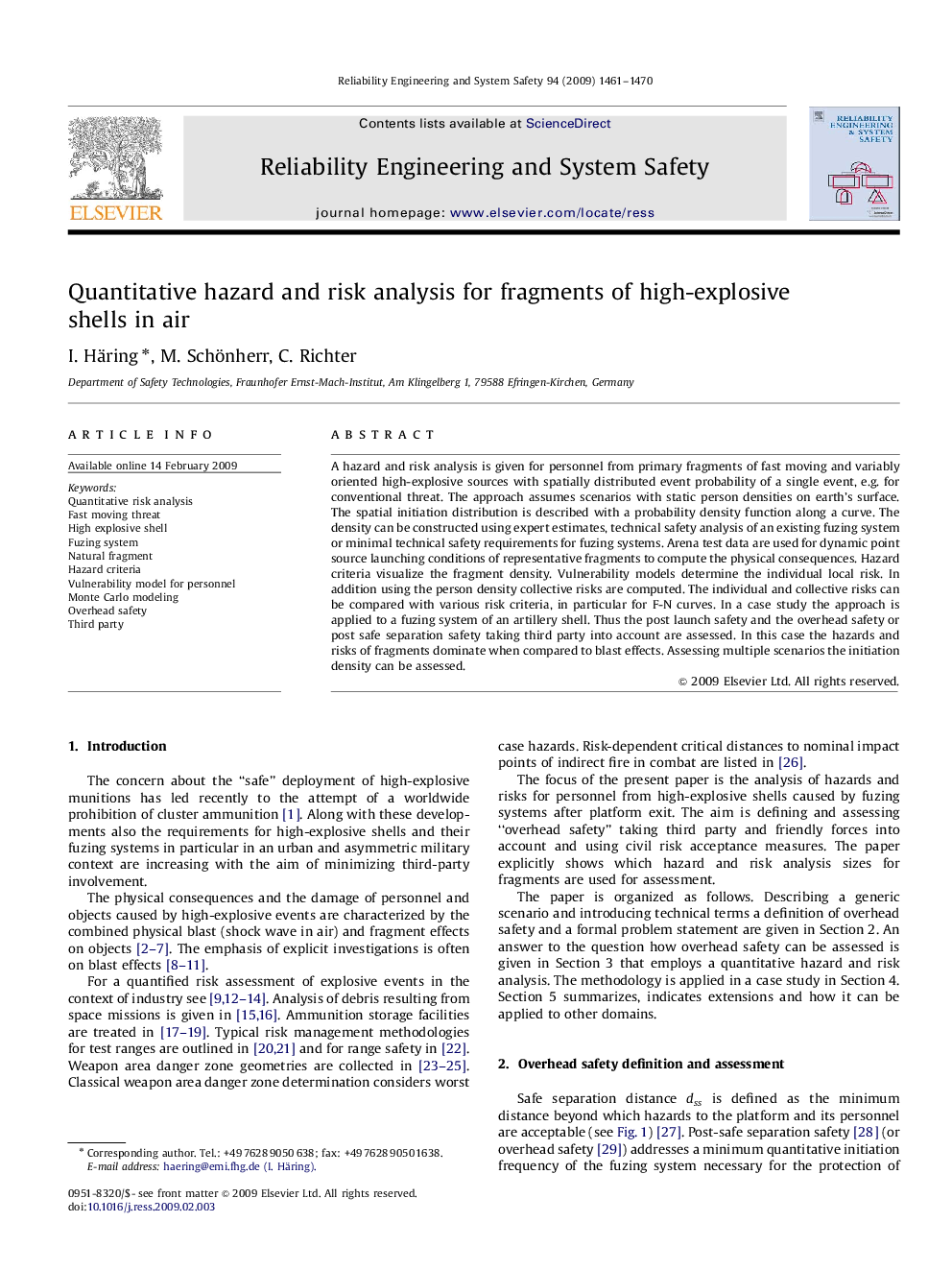| Article ID | Journal | Published Year | Pages | File Type |
|---|---|---|---|---|
| 805896 | Reliability Engineering & System Safety | 2009 | 10 Pages |
A hazard and risk analysis is given for personnel from primary fragments of fast moving and variably oriented high-explosive sources with spatially distributed event probability of a single event, e.g. for conventional threat. The approach assumes scenarios with static person densities on earth's surface. The spatial initiation distribution is described with a probability density function along a curve. The density can be constructed using expert estimates, technical safety analysis of an existing fuzing system or minimal technical safety requirements for fuzing systems. Arena test data are used for dynamic point source launching conditions of representative fragments to compute the physical consequences. Hazard criteria visualize the fragment density. Vulnerability models determine the individual local risk. In addition using the person density collective risks are computed. The individual and collective risks can be compared with various risk criteria, in particular for F-N curves. In a case study the approach is applied to a fuzing system of an artillery shell. Thus the post launch safety and the overhead safety or post safe separation safety taking third party into account are assessed. In this case the hazards and risks of fragments dominate when compared to blast effects. Assessing multiple scenarios the initiation density can be assessed.
